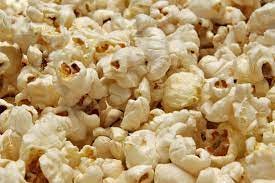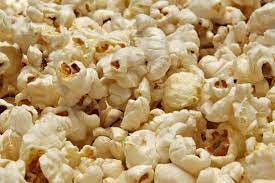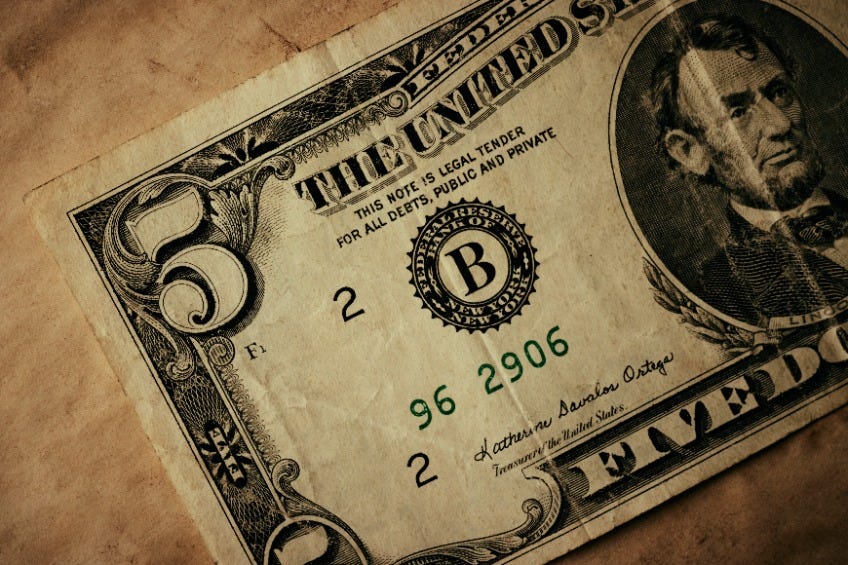Photo Credit: Encyclopedia Britannica
Issue #228 Friday Funday January 20, 2023
If it seems as if popcorn has been around forever, you’re right, it has. Remnants of popped kernels believed to date back to about 3600 BCE were found in a cave in Mexico. Corn itself has been domesticated since about 10,000 years ago in the area around today’s Mexico, but corn was also raised and harvested by the Iroquois Nation, which was spread throughout the Great Lakes region.
Early French settlers in upstate New York, Vermont, and Quebec learned to pop corn in pottery jars filled with heated sand. By the mid-1800s, popcorn cooked on the stovetop or in a kettle over the fire in the fireplace was eaten as a late-night snack, at picnics, and at community social events.
While potato chips are still America’s #1 salty snack, popcorn comes in around #3 after #2 tortilla chips.
Mass consumption of popcorn took off after candy-store owner Charles Cretors invented the first popcorn-popping machine in 1899. The machine was steam-powered and was also used to roast nuts. In 1900, Cretors introduced a horse-drawn popcorn wagon, and his popcorn-popping machine was able to make popcorn with different flavors.
Popcorn is high in fiber, naturally low in fat and calories, gluten-free, non-GMO, and a healthful whole grain.
Popcorn is endorsed by Weight Watchers™️, the American Dental Association, and the American Cancer Society.
The article continues below.
No intrusive ads or annoying popups ever! Instead, please see the important information below and at the bottom of this post. That’s how we grow and sustain this publication. AND, please keep those “Likes” and comments coming! Thanks!
There is new lower pricing for the paid levels at as little as $5.00/month or $50/year!
Paid subscribers with the Substack app are invited to participate in the W.A.S. Chat Room to discuss today’s post.
All posts are free for seven days after their publication. To read all older posts, including the complete archive, and to support us financially, please consider upgrading your subscription to a paid level. Save 17% with an annual subscription. Thank you for your support!
The article continues…
Cracker Jack
Cracker Jack is an American brand of snack food that consists of molasses-flavored, caramel-coated popcorn, and peanuts, well known for being packaged with a prize of trivial value inside.
“Crackerjack” also means “of excellent quality.”
Brothers Frederick and Louis Rueckheim, German immigrants, perfected the recipe in 1896 after first introducing the mixture at the 1893 Chicago World’s Fair.
The Cracker Jack name and slogan, "The More You Eat The More You Want,” were also registered in 1896.
In 1907, lyricist Jack Norworth and composer Albert Von Tilzer released the song “Take Me Out to the Ballgame,” which gave Cracker Jack free publicity with the line “Buy me some peanuts and Cracker Jack…”
The Rueckheim Brothers officially changed the name of the company to “The Cracker Jack Company” in 1922.
The Cracker Jack brand has been owned and marketed by Frito-Lay since 1997. Frito-Lay announced in 2016 that the toy gift would no longer be provided and had been replaced with a QR code that can be used to download a baseball-themed game.
Microwave Popcorn
Today, of course, most people get their popcorn from their microwave. The first patent for a microwave popcorn bag was issued to General Mills in 1981, and the #1 best-selling microwave popcorn is Orville Redenbacher™️, which is now owned by ConAgra.
Orville Redenbacher was an American food scientist and businessman who experimented with hybrids. He began his career selling fertilizer while researching different popcorn varieties in his spare time.
In 1951, Redenbacher and his partner Charlie Bowman bought the George F. Chester and Son seed corn plant in Boone Grove, Indiana. They named the company "Chester Hybrids", and they tried tens of thousands of hybrid strains of popcorn before settling on a hybrid they named "RedBow".
An advertising agency advised them to use Orville Redenbacher's own name as the brand name. They launched their popping corn in 1970, with Redenbacher as the company’s official spokesman.
Ten Fun Facts About Popcorn
January 19th is National Popcorn Day.
Nebraska produces the most popcorn in America, around 250 million pounds per year.
Popcorn is a healthy GMO-free and gluten-free snack, not including adding butter, chocolate, sugar, and other extra toppings.
The hull of some varieties of popcorn shatters when it pops so it looks hull-less.
Popcorn can reach up to 3 feet in distance when popping.
In 1949, popcorn was temporarily banned from movie theaters for being too loud of a snack.
During the World War II sugar shortage, Americans ate 3x more popcorn.
The unpopped popcorn kernels at the bottom of a popcorn bag are called old maids.
Popcorn kernels are 4% water, and the water causes popcorn to pop when heated up.
Popcorn has three common shapes: rice, South American, and pearl. Pearl is the most popular popcorn shape. When popcorn pops in a round shape it is called mushroom popcorn and popcorn which pops in unpredictable shapes is called butterfly popcorn.
The Top Ten Popcorn Flavors
Butter
White cheese
Caramel corn
Kettle corn
Cheddar cheese
Garlic
Turtle: covered in peanut butter, caramel, and chocolate chips
Plain
Zebra: drizzled with white and dark chocolate
Red velvet: covered in white chocolate and red velvet cake crumbs
What are your favorite popcorn types and flavors?
Let us know in the comments section or start a dialogue in the W.A.S. Chat Room (for paid subscribers).
Help us to grow our We Are Speaking Substack!
Don’t Forget! If you have the W.A.S. app for iOS and Android, you can listen to each article by clicking the little headset icon. You can also participate in the W.A.S. Chat (for paid subscribers only).
There are many benefits to using the W.A.S. app, including the ability to listen to our posts and podcast episodes straight from the iOS or Android app.
Paid Subscribers: Join us in the new W.A.S. Chat!
Have you thought about starting a Substack publication of your own? It’s quick, easy, and free!
You can always leave any questions in the comments or email us.
Free posts are available for 7 days after publication. Adjust or upgrade your subscription to the paid level here. Pay less than 14¢ per post for the 36 monthly articles and podcast episodes. Thank you for your financial support!
Read Detroit Stories Quarterly by Keith Owens, et al.
Check out the Global Creative Community Branding and Marketing Academy (GCC BMA) offering online courses networking opportunities, and one-on-one and group coaching for independent writers and creative and solo professionals.







